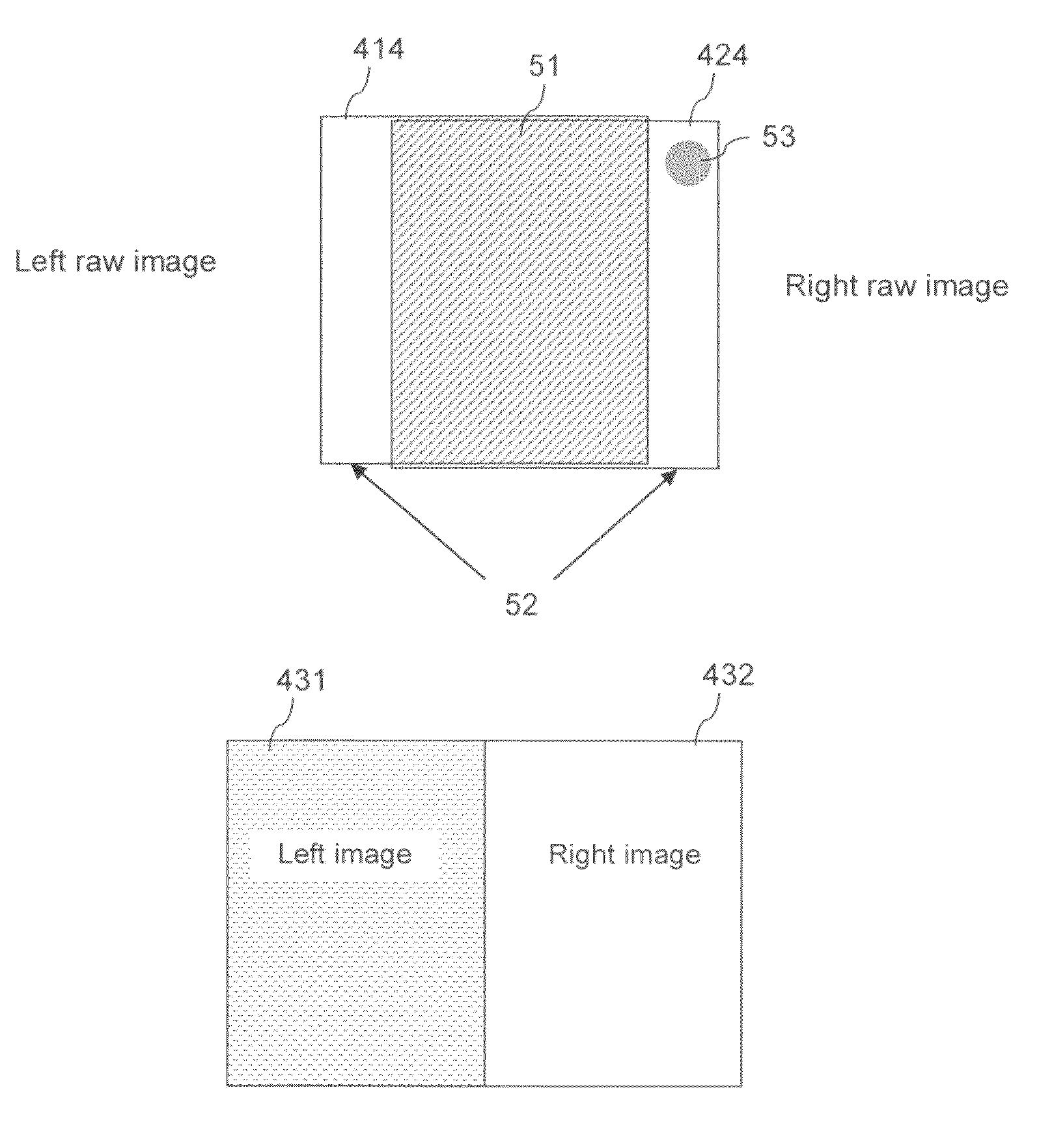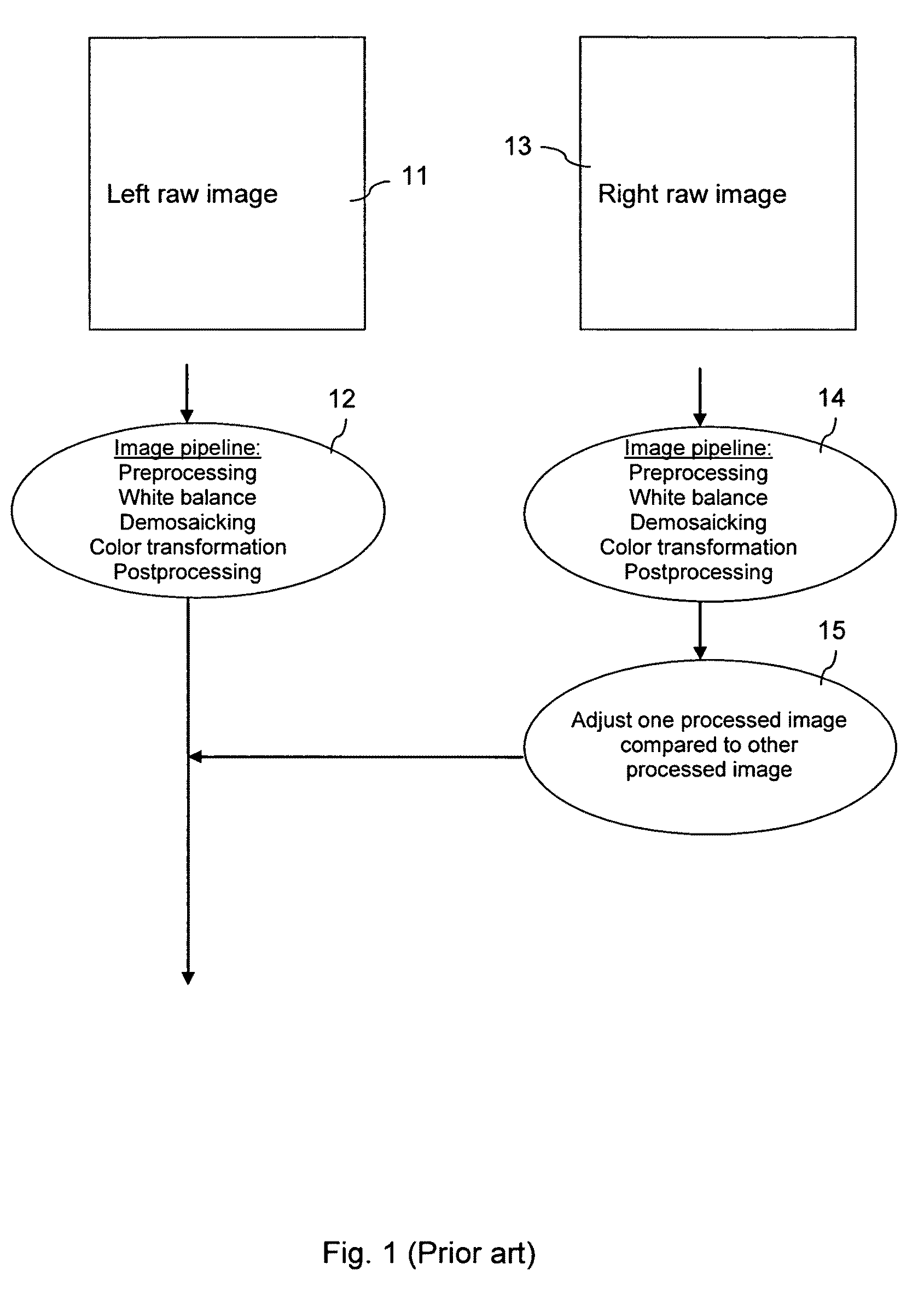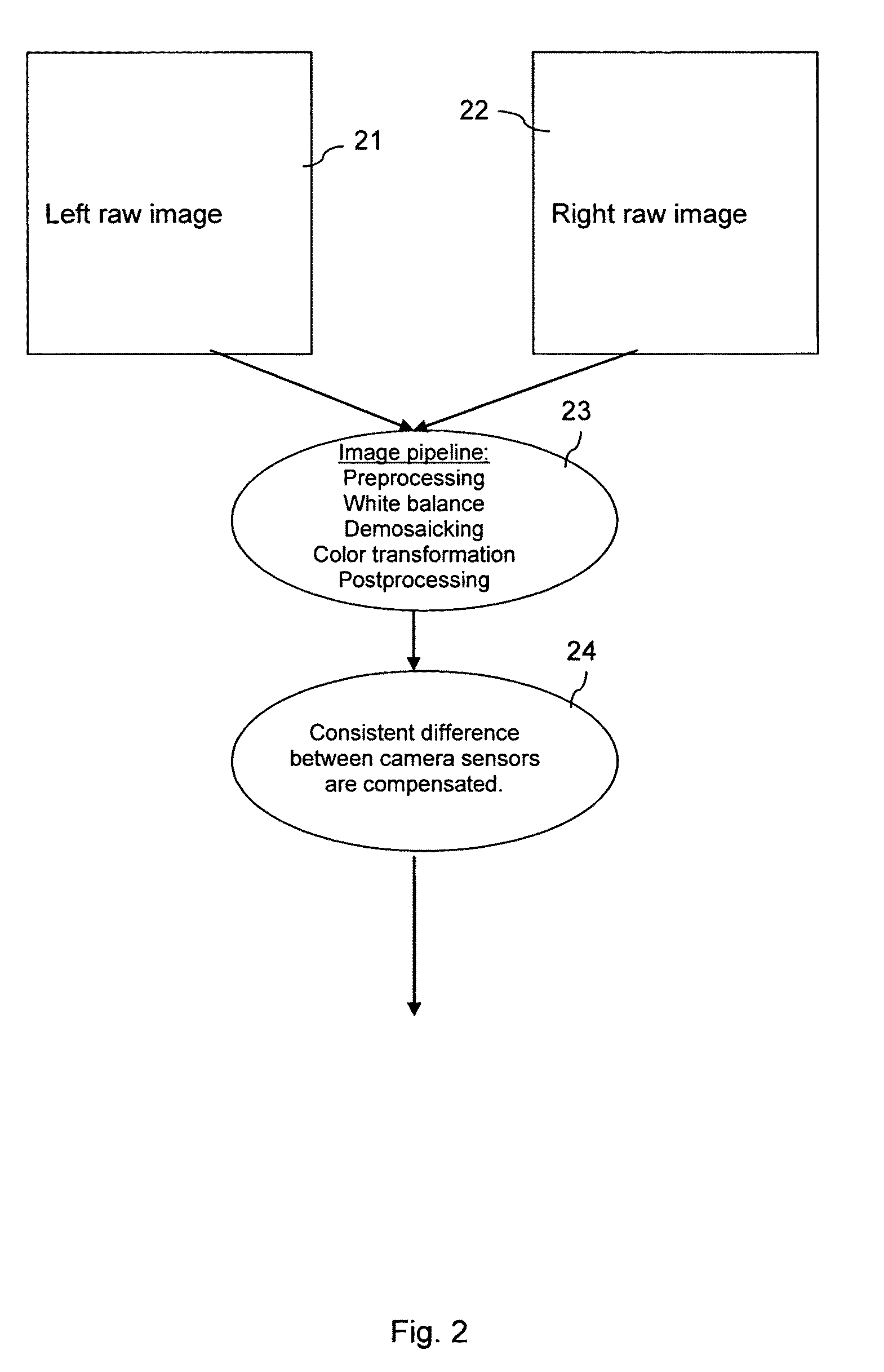Image processing for supporting a stereoscopic presentation
a stereoscopic and image processing technology, applied in the field of stereoscopic presentations, can solve the problems of reducing the stereoscopic viewing experience, severe negative nausea, and the stereoscopic imaging is more susceptible to minute discrepancies between images, so as to reduce the required processing amount.
- Summary
- Abstract
- Description
- Claims
- Application Information
AI Technical Summary
Benefits of technology
Problems solved by technology
Method used
Image
Examples
Embodiment Construction
[0045]FIGS. 1 and 2 are flow charts schematically illustrating the difference between the conventional image processing for a stereoscopic presentation and the processing according to an exemplary embodiment of the invention.
[0046]The flow chart of FIG. 1 represents a conventional method, which uses two parallel image processing chains.
[0047]The image data of a left raw image 11 is processed in a first image chain. The first image chain subjects the data to an image processing pipeline, including preprocessing, white balance adjustment, demosaicking (also called “Color Filter Array Interpolation”), color transformation and postprocessing (step 12). The preprocessing may include for instance linearization, dark current compensation, flare compensation and noise reduction. The postprocessing may include for instance non-linearization (gamma correction), sharpening, etc. The image data of a right raw image 13 is processed separately in a second image chain in a corresponding image proc...
PUM
 Login to View More
Login to View More Abstract
Description
Claims
Application Information
 Login to View More
Login to View More - R&D
- Intellectual Property
- Life Sciences
- Materials
- Tech Scout
- Unparalleled Data Quality
- Higher Quality Content
- 60% Fewer Hallucinations
Browse by: Latest US Patents, China's latest patents, Technical Efficacy Thesaurus, Application Domain, Technology Topic, Popular Technical Reports.
© 2025 PatSnap. All rights reserved.Legal|Privacy policy|Modern Slavery Act Transparency Statement|Sitemap|About US| Contact US: help@patsnap.com



